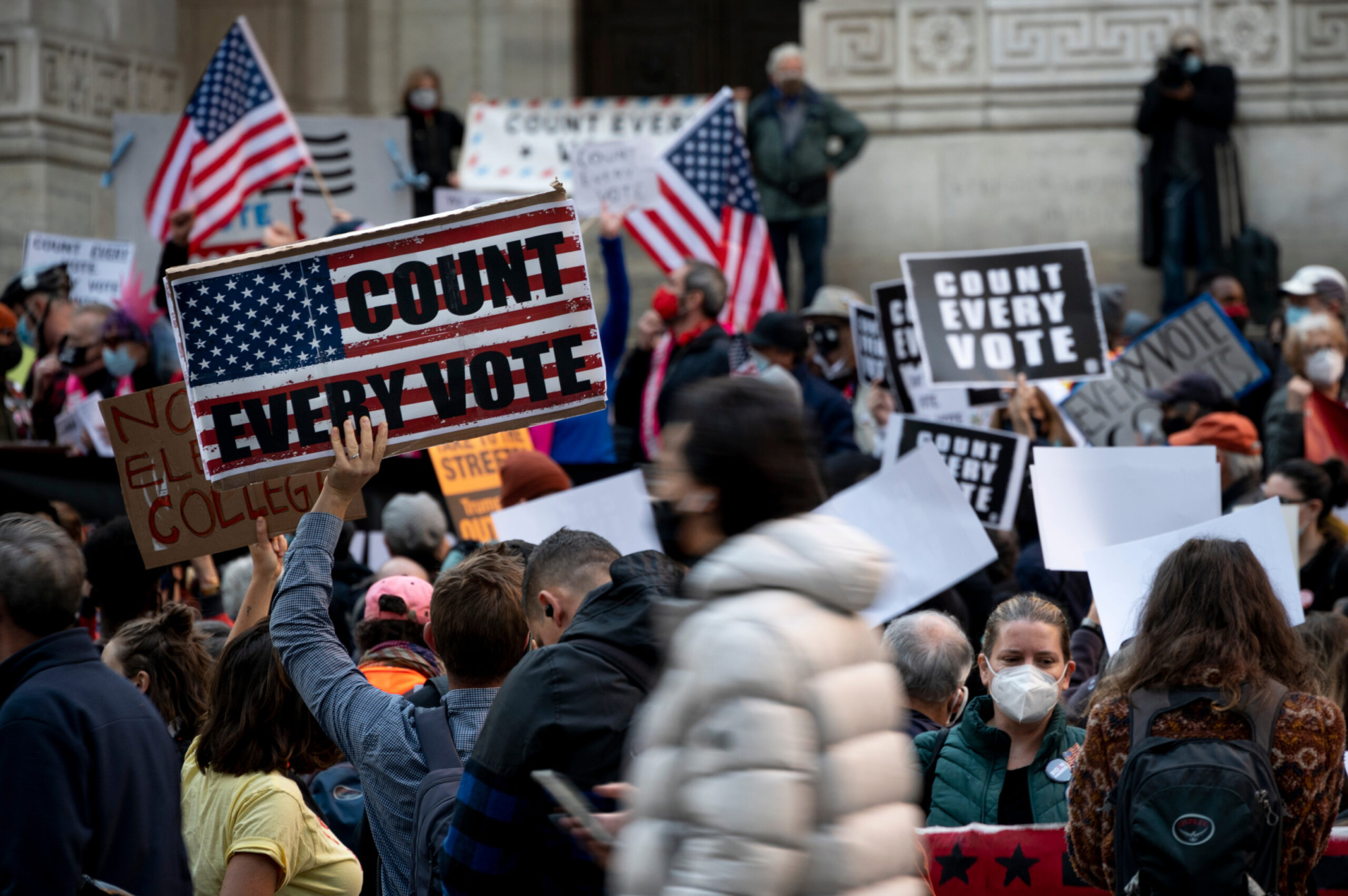What Can Nonprofits Do to Combat Misinformation During the Vote Counting Process?
Issues

Political analysts, election experts, journalists, and nonprofits are predicting an unprecedented turnout for a midterm election. They are also predicting challenges at the polls and to the election results. Election challengers have falsely used election security as a fig leaf to deny supporters of opposing candidates the right to vote, and they have also spread disinformation about voting, election administration, and even the certified results.
Intimidation at the polls is nothing new — there is a long history of threats against voters of color designed to discourage them from voting. Recent tactics have expanded to question the legitimacy of elections and the vote count itself. Potential voters are not the only targets. Poll workers and election officials are also targets of threats and attacks. So, what can nonprofits do to combat this sometimes criminal and anti-democratic behavior while we wait for the election results to be finalized?
First things first. When are votes counted?
Election night watch parties with definitive results before the final guest leaves may be a thing of the past in some states. But an extensive time period of vote counting does not negate the veracity of the results. Every state has a different process and timeline for when election officials start the count.
According to the National Counsel of Legislators, 38 states and the Virgin Islands allow election officials to begin the process of readying absentee/mail ballots prior to the election. Nine states and Washington, D.C., allow election officials to begin processing absentee/mail ballots on Election Day, but prior to the closing of the polls. Three other states maintain that the start of the count is determined by elected officials.
When will voters know the 2022 election results? How can nonprofits ensure that vote count process is protected?
In 2020, most major media outlets did not call the winner in the race for U.S. President until November 7th. Even then, four full days after Election Day, some states were still counting the votes. During this time, election result deniers challenged the count, the process, the time it was taking, and even the actions of election workers. As noted before, state processes differ widely, and there is nothing inherently wrong or nefarious with a slow vote count.
Early voting and vote-by-mail numbers rose to unprecedented levels in 2020. In part a response to COVID, many jurisdictions pushed these methods as a safe alternative to voting in-person. This was on top of an ongoing trend in increased adoption of early and mail-in voting as a convenient way voters could avoid long lines at the polls on Election Day. According to the US Census, 69% of voters used a different method of voting than in-person voting on Election Day.
Presidential election year turnout is traditionally higher than in a midterm election, and 2020 was no exception. In fact, it shattered records. It continued the trend from 2018, which boasted the highest turnout ever for a midterm election. Now, the 2022 election seems to be poised to exceed 2018’s record turnout. To date, more than 20 million people have voted early nationwide according to ABC News.
Will the release of election results be delayed beyond Election night? Most likely. Will this delay create opportunities for those who seek to stop the count and sow doubt? YES. Even in this midterm election there are hotly contested races that could be decided by just a few votes. That is why it’s important to encourage the count of every vote to ensure that every voice is heard.
Alas, what can nonprofits do to make sure everyone’s vote is counted? What can YOUR organization do before and after the polls close?
Nonprofits can play a role to protect everyone’s vote and ensure democracy is defended from those who seek to sow doubt for partisan gain.
First, any organization considering election protection work should know what work it can accomplish based on its tax status. For instance, federal tax law prohibits 501(c)(3) organizations “from directly or indirectly participating in – or intervening in – any political campaign on behalf of or in opposition to any candidate for elective public office.” But a 501(c)(3) can conduct nonpartisan activities surrounding the elections.
Next, check the state and local voting regulations and procedures to understand where your organization can effectively assist. Know the process to combat misinformation.
Your activities could include:
- Administrative advocacy: Support of election administration officials and vote counting. This could include public education on the process and the veracity of the count.
- Public education and advocacy: Nonprofits who have a history of advocacy in the pro-democracy space should feel confident in their ability to respond to anti-democracy actions or communications by election deniers. You can fight disinformation or calls to stop the vote, intimidation of election workers, and disinformation on the certified results.
- Ballot curing: Depending on state and local regulations, if election officials reject a ballot for technical reasons during the counting process the voter has the right to fix or “cure” those issues and have their vote counted. Many states have a process within a certain time frame for ballot cures. In many states, outside organizations can assist by contacting voters to let them know about the issue with their ballot and educating them on the process to ensure their vote will be counted.
- Litigation, asking the courts to intervene: Sometimes it’s necessary to ask state or federal courts to intervene to keep the polls open because weather events or equipment problems prevented people from voting, or to order the continuation of vote counting, or to stop voter intimidation tactics. Your organization could file a suit on behalf of voters or sign on to litigation initiated by pro-democracy groups. You may be called upon for research or witnesses to support the litigation. Recently, The League of Women Voters had success in stopping the intimidating tactics of a group posting armed and masked “guards” around ballot drop boxes in Arizona.
- Lobbying and legislative work: After the election, look to the work that your organization can do at the federal, state or local level to improve the voting process. For instance, your organization can lobby state legislatures to amend election administration laws to protect the right to vote, improve voting processes, expand early voting, and direct state election administrators to clarify the procedures for vote counting. Your organization could gather research and offer to testify before legislative committees on the lessons of recent elections. If your organization is a 501(c)(3), be sure that you are aware of your lobbying limits.
Any of the above activities being conducted by a 501(c)(3) must be nonpartisan (conducted in a way that does not provide support or opposition to candidates for public office).
NOTE: Other types of tax-exempt organizations, such as a 501(c)(4)s, may do this work in support or opposition to parties or candidates, but bear in mind the limitations on the amount of that work can be conducted under federal tax law, which requires that partisan work remain a secondary activity of 501(c)(4) organizations.
For more information listen to the latest Bolder Advocacy Podcast here.
